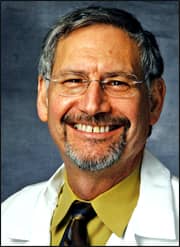by Paul Krasner, DDS
 |
OP: What is the first thing an orthodontist should do for patient with an avulsed (knocked-out) tooth?
Krasner: First, I’d like to review the basic philosophy for saving avulsed teeth. Every tooth is connected to its surrounding bone by the periodontal ligament (PDL). The tooth and surrounding cementum, bone, and gingiva receive nourishment from the blood supply through this ligament. When a tooth is avulsed, the PDL is stretched and splits in half; half stays on the tooth root, and half stays on the socket wall. If these two halves can be kept alive, the tooth can be replanted; the halves of the ligament will reattach, and the tooth will remain vital. The half that stays on the socket wall, since it remains connected to the bone blood supply, is naturally kept alive. However, the PDL cells that remain on the tooth root must be artificially maintained.
When an avulsed tooth presents in an orthodontic office, the tooth should be placed in Hank’s Balanced Salt Solution (HBSS) as quickly as possible. This allows for any debris to be soaked away from the PDL and lost nutrients can be replenished before replantation. There is a commercially available product that meets both of these needs called Save-A-Tooth®. This product allows the teeth to be suspended in a basket in HBSS and gently agitated to remove debris. The teeth should soak in this solution for 30 minutes to replenish lost nutrients. During this time, the orthodontist should take a radiograph to rule out the presence of a root tip or foreign body in the socket. The socket should be gently irrigated with sterile water, saline, or anesthetic solution. If a clot is observed in the socket, it can be gently curetted out.
The avulsed tooth is then grasped by the clinical crown and inserted into the socket. Steady, gentle pressure should then be exerted in an apical direction; it may take as long as 30 to 60 seconds to seat the tooth completely. When the tooth is completely in place, it must be splinted. There are a variety of splints that can be used, but all types should be physiologically functioning. The splint should hold the tooth firmly in position while allowing slight movement. The best type of splint is orthodontic bracketing with a .06 wire on the avulsed tooth and on the teeth mesial and distal to it. A radiograph with the avulsed tooth splinted into position should be taken to ensure proper placement.
OP: What should an orthodontist definitely not do?
Krasner: Teeth that have been out of the mouth for longer than 15 minutes should not be immediately reimplanted, but should be prepared as described above before reimplantation.
OP: After a patient has avulsed a tooth, how soon can an orthodontist resume treatment?
Krasner: The treating orthodontist should wait approximately 3 months before placing active force on it.
OP: What should an orthodontist do to ensure the patient’s comfort after losing a tooth?
Krasner: In order to provide the best possible chance of the patient retaining the tooth and ensuring the patient experiences as little discomfort as possible, the patient should be prescribed a systemic antibiotic such as Augmentin 250 mg qid for 7 to 10 days, a chlorhexidine rinse twice a day for two weeks, and an appropriate analgesic such as ibuprofen 600 mg or hydrocodone 7.5 mg q4h. In addition, a recommendation for a tetanus prophylaxis injection should be made.
OP: What else can orthodontists do to educate and protect their patients?
Krasner: Orthodontists should discuss dental trauma and protection options with their patients, and make mouthguards available to their patients. These mouthguards should be fitted properly. Additionally, orthodontists can donate or sell Save-A-Tooth systems (with their contact information printed on the system) to their patients and parents. This will allow patients to arrive at the office with the teeth already free of debris and physiologically and metabolically sound. This is also a great way for orthodontists to get their name in front of new patients. For example, if a teammate of one of their patient’s experiences a knocked-out tooth, the patient (or parent) could provide the victim with the Save-A-Tooth with the orthodontist’s name printed on the system. The company offers custom labeling at no additional charge; go to www.Save-A-Tooth.com for more information.
Paul R Krasner, DDS, is an endodontist in private practice in Pottstown, Pa, and a professor at Temple University School of Dentistry. He has a financial interest in the product mentioned here. He can be reached at










